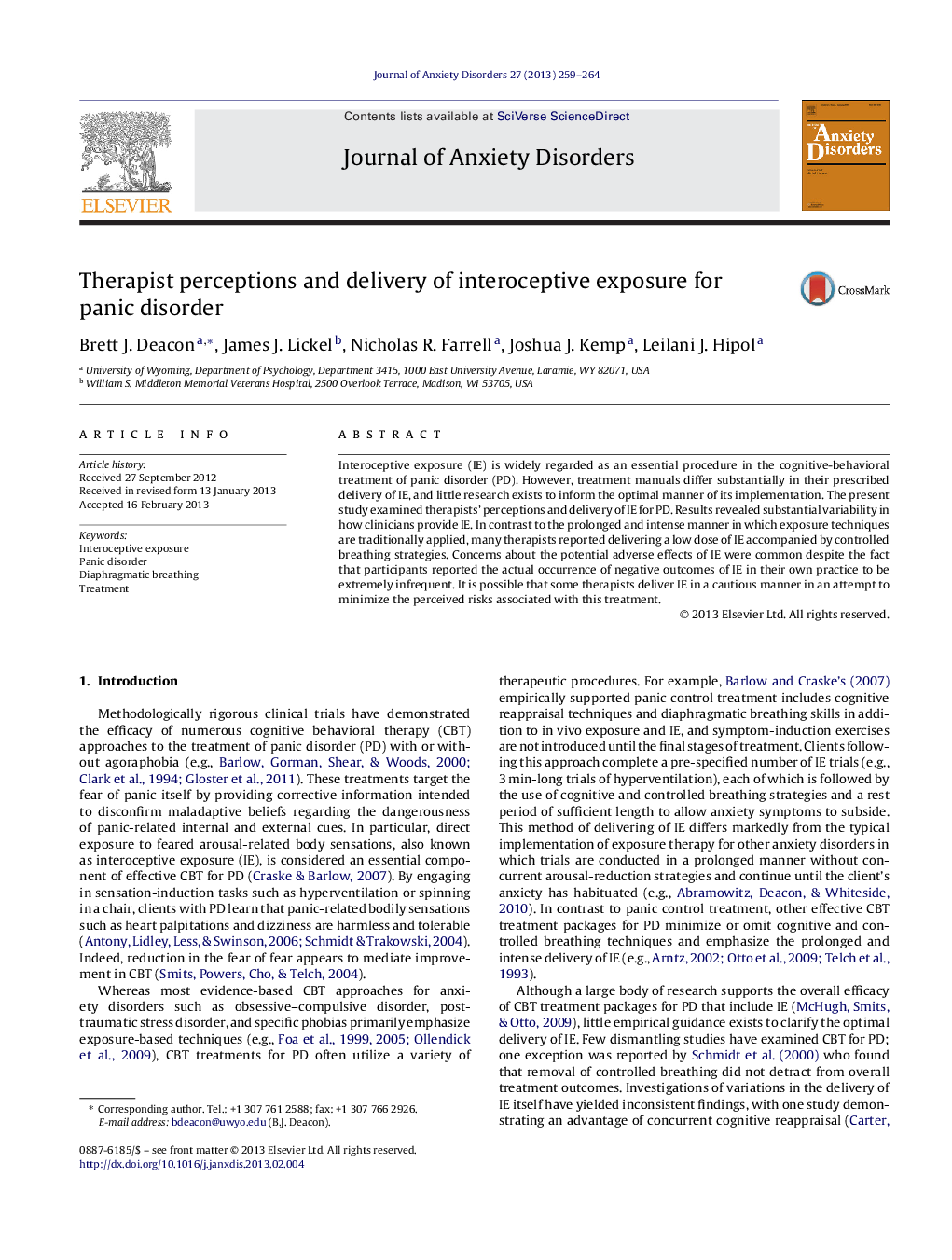| Article ID | Journal | Published Year | Pages | File Type |
|---|---|---|---|---|
| 909383 | Journal of Anxiety Disorders | 2013 | 6 Pages |
Interoceptive exposure (IE) is widely regarded as an essential procedure in the cognitive-behavioral treatment of panic disorder (PD). However, treatment manuals differ substantially in their prescribed delivery of IE, and little research exists to inform the optimal manner of its implementation. The present study examined therapists’ perceptions and delivery of IE for PD. Results revealed substantial variability in how clinicians provide IE. In contrast to the prolonged and intense manner in which exposure techniques are traditionally applied, many therapists reported delivering a low dose of IE accompanied by controlled breathing strategies. Concerns about the potential adverse effects of IE were common despite the fact that participants reported the actual occurrence of negative outcomes of IE in their own practice to be extremely infrequent. It is possible that some therapists deliver IE in a cautious manner in an attempt to minimize the perceived risks associated with this treatment.
► Therapists were surveyed about interoceptive exposure (IE) for panic disorder. ► Substantial variability was evident in therapists’ delivery of IE. ► IE was often delivered in a low-dose manner with controlled breathing strategies. ► Therapists also reported concerns about negative outcomes caused by IE. ► Cautious delivery of IE may be an attempt to mitigate its perceived risks.
